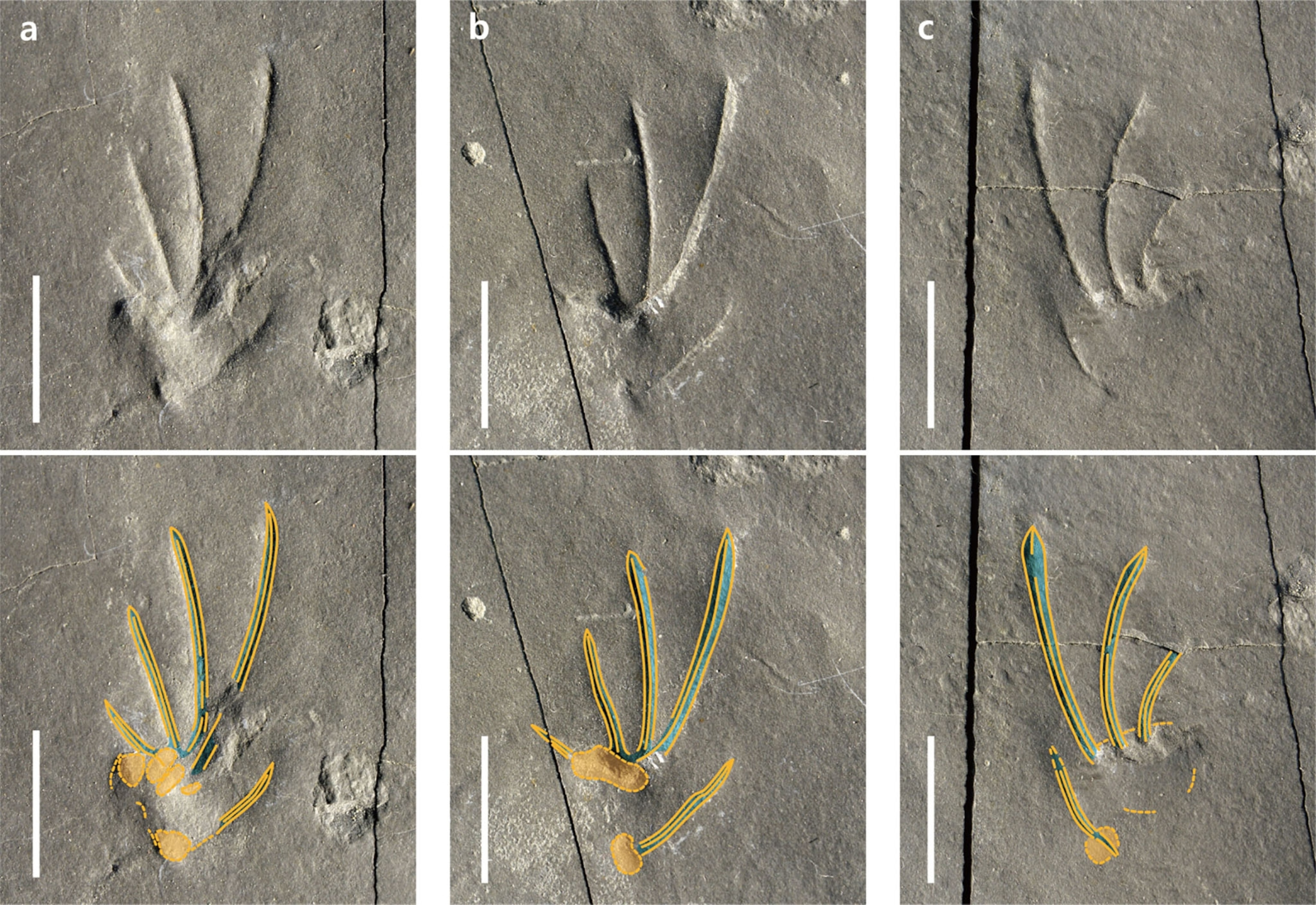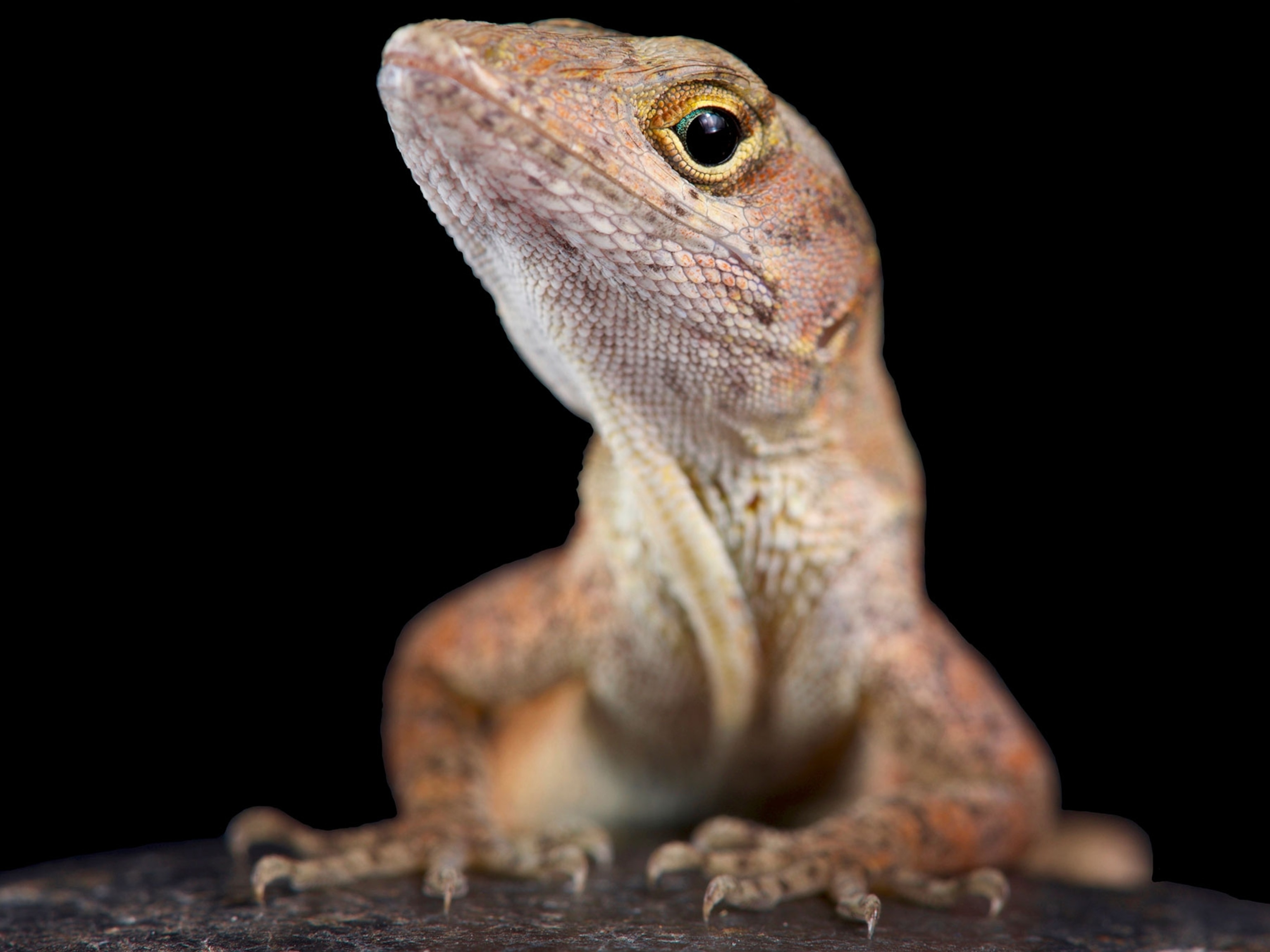
Fossil Footprints Are Oldest Traces of Lizards Running on Two Legs
The lizard's sprint may have helped it avoid predators, such as winged reptiles called pterosaurs.
This week, all eyes are on Pyeongchang, South Korea, where some of humankind's most talented athletes are gathered to make Winter Olympics history. But 110 million years ago, a muddy lagoon about 170 miles south of the 2018 games hosted athletic history of its own—by tracing tiny footsteps as a lizard sprinted on its hind legs.
The fossilized trackway, unveiled on Thursday in the journal Scientific Reports, is the oldest direct evidence of bipedalism, or moving on two legs, in lizards. More than 50 species of lizards today run on two legs; the new find reveals that the ability arose early on in lizard evolution.
“Footprint fossils provide direct evidence of an animal’s behavior, [which] skeletal fossils cannot do,” says study co-author Yuong-Nam Lee, a paleontologist at Seoul National University.
The mudstone slab contains 29 footprints of a lizard. Although the type of lizard that made them remains unclear, the researchers named this particular sample of fossil tracks Sauripes hadongensis—“the lizard foot of Hadong”—after Hadong County, South Korea, where the slab was found.

Crucially, 25 of the footprints are from the lizard's hind feet. The wide spaces between the inch-long footsteps and the narrowness of the gait suggest that the animal started on all fours but then accelerated into running on its hind legs, akin to the behavior of some modern lizards.
“It's the first direct evidence of bipedal locomotion in lizards for the entire Mesozoic,” an era also known as the age of dinosaurs, says Tiago Simões, a University of Alberta paleontologist who reviewed the study. “It shows that some of the most interesting aspects of lizard behavior ... were already present back in the early Cretaceous.”
Making Major Strides
Today's lizards move using four types of gait: a slow four-legged walk, a fast four-legged walk, a diagonal run, and a two-legged run on the hind limbs. Some, like the Jesus Christ lizard (Basilicus basilicus), can even run on two legs across short stretches of water.
But figuring out how lizard bipedalism evolved is tricky. Some studies have found hints of bipedalism based on the relative lengths of fossil lizards' limbs, with longer hind limbs suggesting a knack for two-legged sprints. To see how ancient animals actually moved, though, nothing beats fossil footprints.
In August 2004, Lee and co-author Hang-Jae Lee found slabs of mudstone in an abandoned Hadong County quarry that were covered in ancient footprints. At first, the researchers paid the lizard tracks little mind, since they also found tracks made by pterosaurs, the winged reptiles that lived alongside dinosaurs. (Find out why pterosaurs were the weirdest wonders on wings.)
“I thought the lizard tracks were just small animal tracks of little importance,” said Lee. The tracks stayed in storage until 2016, when Lee suddenly realized their significance.
“With new eyes, I examined these tracks again and found out they have very typical pedal morphologies [or foot shapes] of modern lizards,” Lee added. “I was very excited, because they represent the oldest lizard tracks in the world.”
Why was the lizard running? The study's authors suggest that S. hadongensis may have been racing away from a would-be predator—and they even have a suspect: Pteraichnus koreanensis, a distinct set of pterosaur tracks in the same rock layer as the lizard's.
P. koreanensis is attributed to a pterosaur group that is known for including small, agile predators with sharp teeth and large eyes, says Lee. “They could have attacked prey [such as lizards] from the air like some birds do.”





